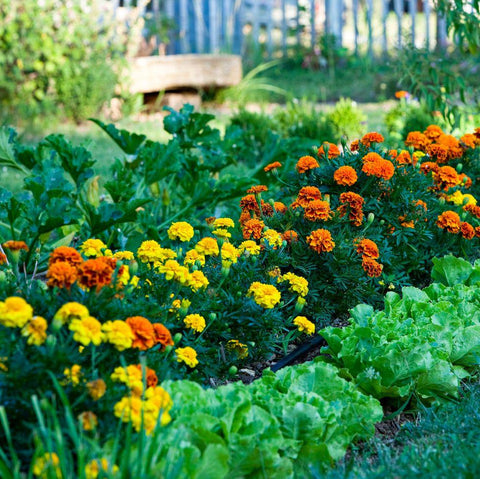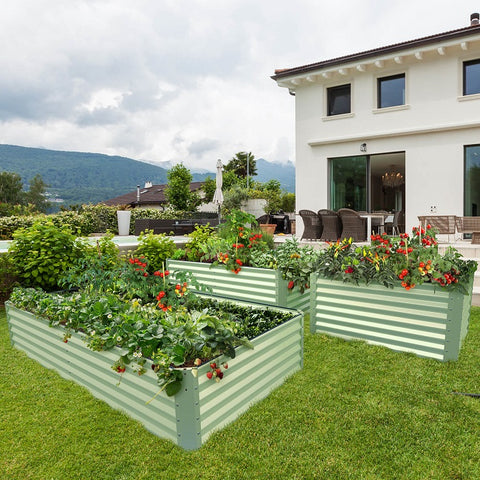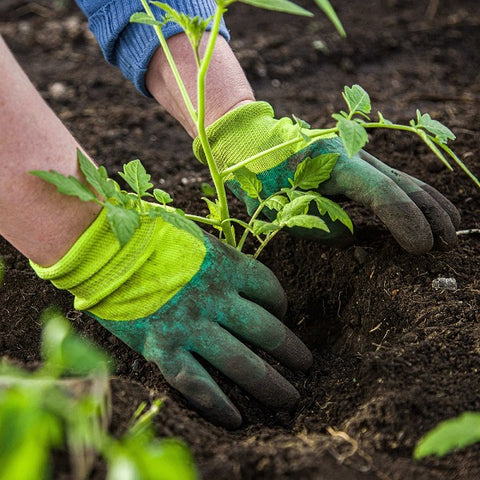In a world that's becoming increasingly aware of the importance of sustainable living, Back to Eden gardening emerges as a revolutionary practice that not only yields bountiful harvests but also nurtures the soil and environment. If you're seeking a gardening method that aligns perfectly with your commitment to eco-friendliness, innovative designs, and high-quality materials, then Back to Eden gardening might be just what you need. In this comprehensive guide, we'll delve into the intricacies of Back to Eden gardening, exploring its principles, benefits, and how it can seamlessly integrate with our eco-friendly raised garden beds.

Chapter 1: Unveiling the Back to Eden Method
At its core, Back to Eden gardening is about emulating the natural processes that occur in forests, where plant debris covers the ground, nourishing the soil and creating a self-sustaining ecosystem. This method, popularized by Paul Gautschi, promotes harmony with nature and a minimalistic approach to gardening.
- Mulching with Wood Chips: The foundation of Back to Eden gardening lies in thick layers of wood chips that serve as both a mulch and a natural compost. These wood chips mimic the forest floor, providing a protective covering that retains moisture, suppresses weeds, and gradually decomposes to enrich the soil.
- No-Till Gardening: Unlike traditional gardening methods that involve tilling the soil, Back to Eden gardening discourages tilling. Instead, it promotes a no-till approach that preserves the soil structure, prevents erosion, and allows beneficial microorganisms to thrive.
Chapter 2: Benefits of Back to Eden Gardening
The Back to Eden method offers a plethora of advantages, making it an ideal choice for gardeners who seek sustainability, efficiency, and productivity:
- Water Conservation: The wood chip mulch acts as a sponge, absorbing and retaining water, and reducing the need for frequent watering. This is especially helpful in regions that are prone to drought.
- Improved Soil Structure: Over time, the wood chips break down, enriching the soil with organic matter. This enhances soil structure, aeration, and water-holding capacity.
- Weed Suppression: The thick mulch layer effectively prevents weed growth by blocking sunlight, reducing the need for chemical herbicides and labor-intensive weeding.
- Reduced Soil Erosion: By eliminating tilling and protecting the soil with mulch, Back to Eden gardening minimizes soil erosion, which is especially crucial on sloped landscapes.

Chapter 3: Setting Up Your Back to Eden Garden
To embark on your Back to Eden gardening journey, follow these steps:
- Selecting a Location: Choose a sunny spot for your garden, as sunlight is essential for plant growth. Ensure that it's easily accessible and provides enough space for your chosen crops.
- Laying the Foundation: Begin by laying down a layer of newspaper or cardboard to smother any existing weeds or grass. Then, apply a thick layer (about 3-4 inches) of wood chips on top.
- Planting: Create small pockets in the wood chips to plant your desired crops. You can either plant directly into the wood chips or create compost-filled pockets for seedlings.
Chapter 4: Back to Eden and Eco-Friendly Raised Garden Beds
Integrating Back to Eden principles with eco-friendly raised garden beds can lead to a harmonious and productive gardening experience:
- Material Selection: Opt for raised garden beds made from eco-friendly and sustainable materials. This complements the natural ethos of Back to Eden gardening.
- Enhanced Soil Health: Raised beds provide better control over soil quality and drainage. By applying Back to Eden principles within these beds, you create an environment that fosters optimal plant growth.

Chapter 5: Maintaining Your Back to Eden Garden
Simplicity and low maintenance are hallmarks of Back to Eden gardening:
- Additional Mulching: Periodically add a fresh layer of wood chips to your garden as the existing mulch breaks down. This maintains moisture retention and enriches the soil.
- Composting: Utilize kitchen scraps and yard waste to create compost that can be incorporated into your Back to Eden garden. This boosts soil fertility and reduces waste.
Chapter 6: Reaping the Rewards
As your Back to Eden garden flourishes, you'll witness its rewards firsthand:
- Abundant Harvests: The rich soil nurtured by wood chip mulch fosters robust plant growth, leading to impressive yields of fruits, vegetables, and herbs.
- Connection to Nature: Back to Eden gardening encourages a deeper connection with the natural world, allowing you to observe the symbiotic relationships that unfold in your garden.

Conclusion
Back to Eden gardening is more than just a method; it's a philosophy that embraces the principles of sustainability, minimalism, and harmony with nature. By embracing the Back to Eden approach and integrating it with our innovative designs, high-quality materials, and eco-friendly raised garden beds, you're embarking on a journey that not only enhances your gardening experience but also contributes to a healthier planet. As you nurture your garden and witness the thriving ecosystem you've created, you'll find solace in the fact that you're not just growing crops – you're fostering life and creating a greener, more vibrant world.









